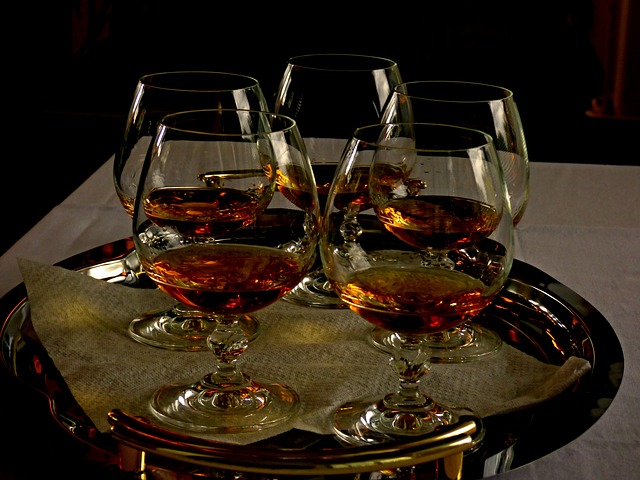Though the term brandy may conjure up memories of your uncle’s preferred late-night tipple, brandy is one of the world’s finest alcohols. Whiskey is distilled from a fermented sugar-rich grain liquid called the mash; Brandy is distilled from wine. Brandy represents a relatively broad category of spirits, of which Cognac is one subset. Though all Cognacs are brandies, not all brandies are Cognacs.
What is Brandy
Brandy is said to originate from the term brandewijn, meaning “burned wine” in Dutch. As with many of the world’s most revered beverages, it was initially created by necessity. It was a preservation technique for long voyages to concentrate the wine before being reconstituted with water after the journey. It was distilled and transported in oak casks. As the story goes, this concentrated spirit became popular amongst sailors in the 16th century.
Iterations of brandy can be found all over the world. Brandy is derived from grape wine; however, other fruit brandies exist. Plum brandy, apple brandy, and brandy from grape pomace are just a few of the alternatives.
Distillation Basics
Before understanding how Cognac differs from your average brandy, it is crucial to know the basics of distillation. All distillation must start with a base alcoholic beverage; In the case of brandy, it is usually wine. Water and alcohol have different boiling points. By purposefully heating the alcohol to its boiling point, the alcoholic vapors are caught in a still, leaving pure alcohol.
The device used to distill is called a still. Two main categories of stills exist; the pot still and the continuous still (column still). As one of the original stills, the pot still is more straightforward and less efficient but makes up for this in its ability to leave some flavor in the final product. Though care must be taken with the pot still to remove the initial and final part of the distillate, which contains harmful toxic alcohol and undesirable flavors.
The continuous still or column still employs steam in one column to then catch the vapors in a second column. The result is a cleaner final product, but one that comparatively loses in flavor. Depending on the desired outcome, both are great options. The pot still is usually well-suited to complex spirits like Scotch and Cognac and the continuous still or commonly known as a column still is used for more neutral spirits. Though all distilled alcohol is colorless, spirit makers can opt to age in barrels to impart flavor and color or add color themselves.
What is Cognac
Cognac, one of the world’s finest beverages, is both a drink and a region. Cognac originates from the town of the same name in the Charente region in southwest France. Just as Champagne must originate from the Champagne region in France, Cognac follows a similar logic. It is a protected designation of origin with the European Union and has several areas where the wine can originate. Grande Champagne and Petit Champagne are the best zones for production in the region. The names denote their chalky soils akin to those of Champagne.
Different from many brandies, Cognac’s base wine must be composed of specific grapes. Ugni Blanc is the most important grape used. In addition, Cognac’s production uses a particular pot of copper still called the Charentais still. The spirit must be distilled twice in the long undulating pipes of the still. After distillation, the spirit goes into oak casks with oak sourced from nearby forests.
Part and parcel to understanding Cognac are the labeling terms. Most commonly seen are the age designations representing the age of the youngest part of the blend in a bottle of Cognac. They are as follows:
VS or ***: Meaning “Very Special” indicates two years in cask
VSOP: Meaning “Very Special/Superior Old Pale” indicates 4 years in barrel.
XO: Meaning “Extra Old” indicates ten years in cask, although used to mean six. Many producers age their XO for much more than the minimum.
Other important types of brandy
Even within France, other excellent brandies exist. Chief among them is Armagnac. This is a brandy further south from Cognac. Although this Cognac is made from a blend of grapes, this spirit undergoes just one distillation in a continuous still. As a result, it produces a slightly more flavorful spirit than the double distillation done in a pot still.
Brandy de Jerez from Spain and Pisco from Peru are just a few of the notable brandies of the world. In addition, China, India, Russia, and the US are some of the world’s largest brandy consumers and therefore have relatively large industries themselves.


